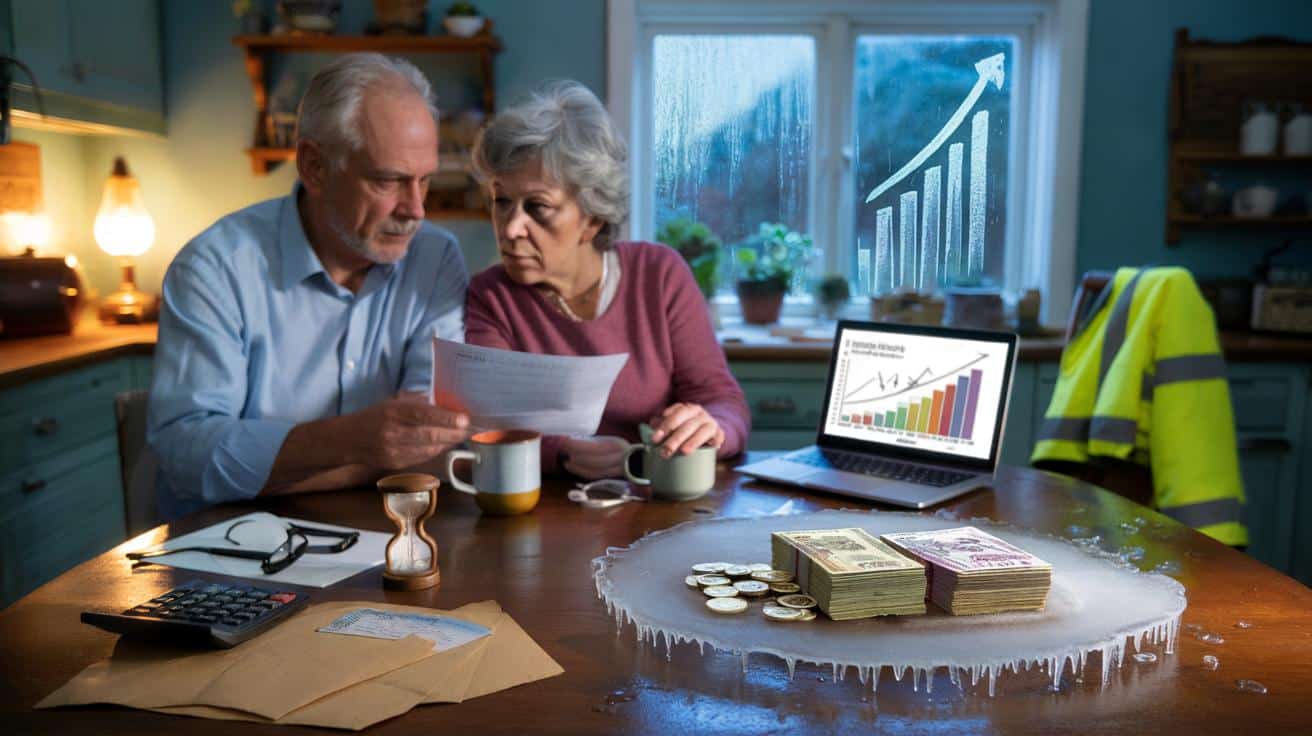The income tax thresholds are stuck, the State Pension age steps up, and a raft of pension rules from the last two years fully bed in by 2026. If you’re edging toward finishing work, or already drawing some income, the year ahead won’t feel like business as usual. It will feel like someone moved the furniture in the dark.
I met a couple in a village hall on a damp Thursday, arms folded round paper cups of tea, trying to square their pension letters with their tax code. They weren’t angry. Just puzzled that a higher State Pension could nudge them into paying income tax for the first time. Down the row, a man in a hi-vis jacket whispered that his part-time shifts were now “costing him” more than he expected.
The mood was gentle, not gloomy. We’ve all had that moment when the numbers on a page feel a size too small for the life they’re meant to fund. A screen in the corner flickered with local news. Nobody looked up. One sentence cut through the steam from the urn. This will be the year the freeze bites.
The freeze that bites: why 2026 feels different
The UK’s income tax thresholds remain frozen until April 2028. The Personal Allowance stays at £12,570, while the higher-rate threshold in England, Wales and Northern Ireland sits at £50,270. Scotland has its own bands and rates, with more people pulled into higher bands by pay and pension increases. As wages and the State Pension rise with the world’s prices, the frozen bands quietly scoop up more taxpayers. This is what 2026 does: it sneaks up on you.
Take an everyday scenario. You reach 66 in mid‑2026 and start on the new State Pension, then top up with £6,000 from a defined contribution pot to cover bills. The State Pension has risen strongly in recent years under the triple lock, and it may climb again by 2026. That’s good news for your weekly income. It also means more of your overall retirement money could drift above £12,570, especially once you add any part‑time earnings. **The result is “fiscal drag” you can feel, even if you never change tax bands.**
Here’s the logic. With frozen thresholds, each pound of uprating or work income is more likely to fall into a taxed slice. The effect is stealthy, not spectacular. More pensioners start paying tax, and those already paying see a slightly larger slice taxed. The same story plays out for investment income outside ISAs. Capital gains and dividend allowances were cut to £3,000 and £500 respectively from April 2024, and they haven’t grown. You can keep investing with intent. Just expect less shelter from allowances and more admin around timing and harvesting gains.
New rules to watch: state pension age, tax‑free cash and finding lost pots
Start with dates. The State Pension age rises from 66 to 67 between April 2026 and April 2028. Check your exact State Pension age on the government website, then map when you’ll actually be paid. If your birthday sits near a changeover, planning a bridge of 6–18 months matters. You could use cash savings, a modest pension drawdown, or delay big spends. **A simple timeline on a single page can save you thousands.**
Next, the tax rules inside pensions. The old Lifetime Allowance has gone, replaced in April 2024 with two caps on tax‑free amounts: the Lump Sum Allowance (£268,275 for most) and the Lump Sum and Death Benefit Allowance (£1,073,100). You don’t get “25% tax‑free” without limits any more; withdrawals count against those new allowances across a lifetime. Touch your pot flexibly and the Money Purchase Annual Allowance likely drops to £10,000 a year for future contributions. People also forget that one-off withdrawals can trigger emergency tax codes. Let’s be honest: nobody does that every day.
There’s also the practical side of managing multiple pots and finding what you’ve lost. The government’s Pensions Dashboard is expected to become usable around 2026, connecting your pots in one view. Small‑pot consolidation may also move forward under ongoing reforms designed to reduce duplication. That means fewer charges and fewer letters to ignore.
“Think of 2026 as housekeeping year,” says a Leeds planner I spoke to. “Same home, tidier drawers. You’ll find what you forgot you owned.”
- Check your State Pension forecast and age date.
- List all pensions, with provider, value, charges and old protections.
- Decide your tax‑free cash strategy against the new allowances.
- Plan withdrawals to manage tax codes and keep the MPAA in mind.
- Ring‑fence an emergency fund so markets don’t dictate your income.
A wider view for 2026
Tax freezes don’t shout. They hum. The State Pension age rise is the visible line on the wall calendar, while the thresholds quietly change the tune of your budgeting. If you work part‑time past 66, you won’t pay employee National Insurance, yet the frozen bands still pull more of your pay into income tax. That’s why small adjustments matter. One month’s delay to a withdrawal, one more ISA transfer, one fewer taxable dividend.
Pensions also step into their mid‑2020s form. The new tax‑free limits sit where the Lifetime Allowance once stood, and estate planning shifts with them. Many households lean on pensions as IHT‑friendly vehicles while spending taxable investments first. That can still make sense. It deserves a fresh run‑through with the 2026 lens, especially if you’re gifting, supporting adult children, or navigating care‑cost uncertainty in late life.
What you can do now is simple, not flashy. Sketch your cash needs for the next 24 months. Line those needs up with where the money sits today. Then map the tax touchpoints that 2026 introduces: your State Pension age date, the frozen thresholds, the new pension allowances, the likely launch of dashboards. **The goal isn’t a perfect plan. The goal is fewer surprises.**
| Point clé | Détail | Intérêt pour le lecteur |
|---|---|---|
| Tax threshold freezes | Personal Allowance £12,570 and higher-rate band frozen to April 2028 (rUK); Scotland has different bands | Anticipate “fiscal drag” on pensions, wages and investment income |
| State Pension age shift | Rises from 66 to 67 between April 2026 and April 2028 | Plan a bridge if your date moves; time withdrawals and part‑time work |
| New pension rules | Lump Sum Allowance £268,275; LSDBA £1,073,100; MPAA likely £10,000 | Set a tax‑free cash strategy and avoid contribution traps after access |
FAQ :
- Will my State Pension alone be taxed in 2026?It could be, depending on uprating and your other income. The Personal Allowance is frozen at £12,570, and the State Pension has been rising. Add part‑time pay or a small drawdown and you may cross the line.
- Is the triple lock still in place?As of 2025, the triple lock remains government policy, though annual outcomes depend on inflation, earnings growth and political decisions. Build flexibility into your 2026 budget.
- What changed with tax‑free cash?Since April 2024, most people have a Lump Sum Allowance of £268,275 across life. That broadly reflects 25% of a £1,073,100 pot, but it’s a hard monetary cap, not a rolling percentage without limits.
- Can I still top up my State Pension record?You can usually buy voluntary National Insurance years if you’re short, though rules and deadlines vary. Check your record on GOV.UK and consider guidance before paying.
- When will the Pensions Dashboard be available?Government expects consumer access to start around 2026, with schemes connecting in phases. Treat it as a helpful tool for finding pots, not a substitute for advice.








So this is basically a stealth tax, right? With frozen threshholds, more of us pay without a rate rise. Any realistic chance these bands unfreeze before 2028, or should we plan as if they won’t?
Great explainer—finally someone made MPAA and the new Lump Sum Allowance understandable. I definately misread the “25% tax‑free” bit until now.